Duality and complexity of material allows artist to cast its different qualities, Wang Qian reports.
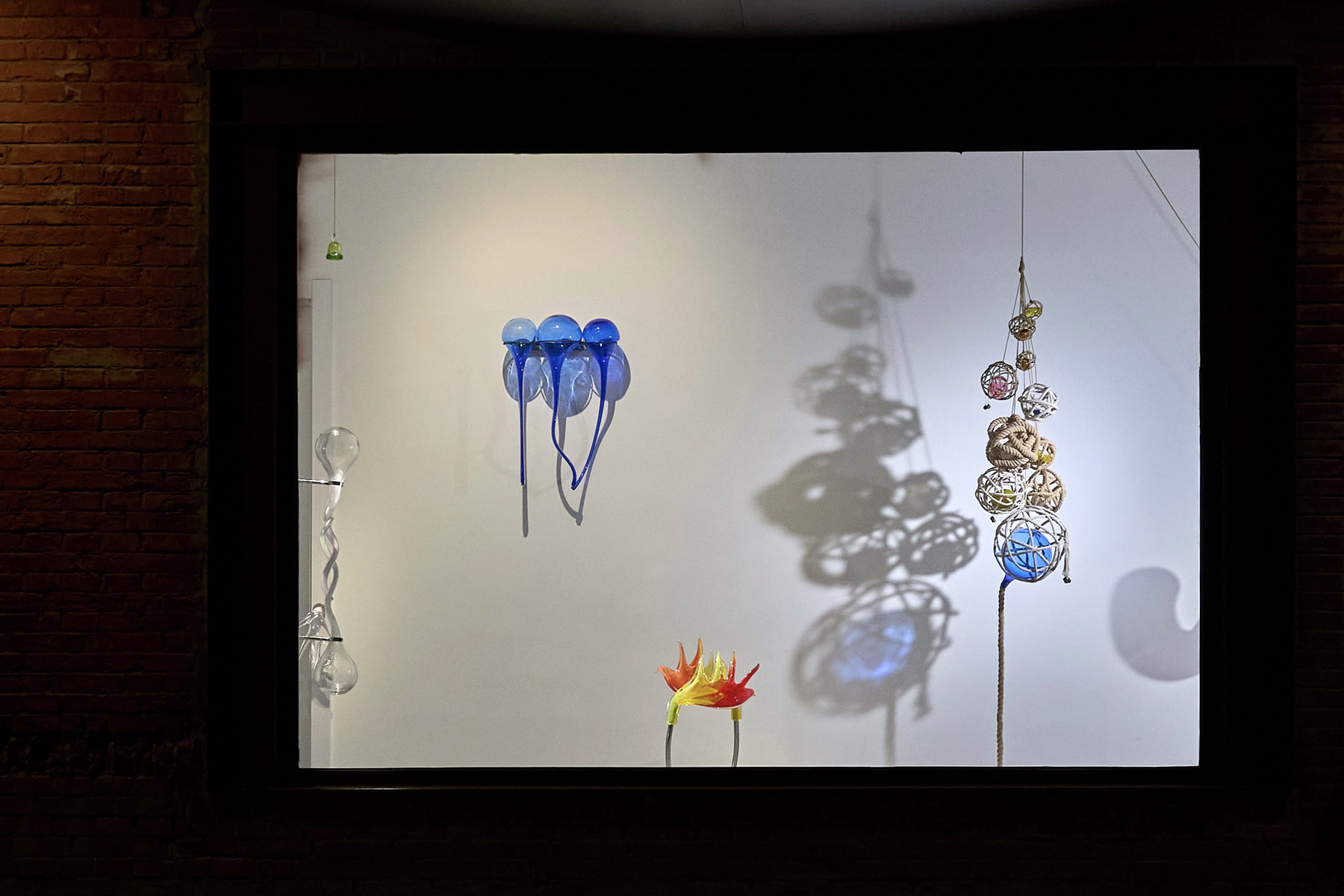
For Xie Wendi, glass is a fascinating material with a contradictory nature. It can be fragile or resilient, transparent or opaque, rigid yet malleable. It may look light, but is actually quite heavy.
"The more I work with glass, the more I feel like it: fluid and solid. When heated, it flows and takes different shapes, and when it cools, it is strong in compression, as am I," the 35-year-old artist says.
These paradoxical properties are on full display in her latest installation, Nothing New Under the Sun, which is on show in two display cases that resemble "windows" at the Gravity Art Museum in Beijing. The collection of 20 objects inspired by everyday items have been positioned in a "mischievous" way, and cannot all be seen at a glance.
READ MORE: A glass apart
The objects are designed to fill the windows, some interlocked with others in spirals, breaking the boundaries between heavy and light, soft and hard. As sunlight passes through the windows, captivating illusions are created. "You have to move about to change your angle to discover all the pieces," Xie says.
Her work has been exhibited in the United Kingdom, the Czech Republic, Germany, and the United States.
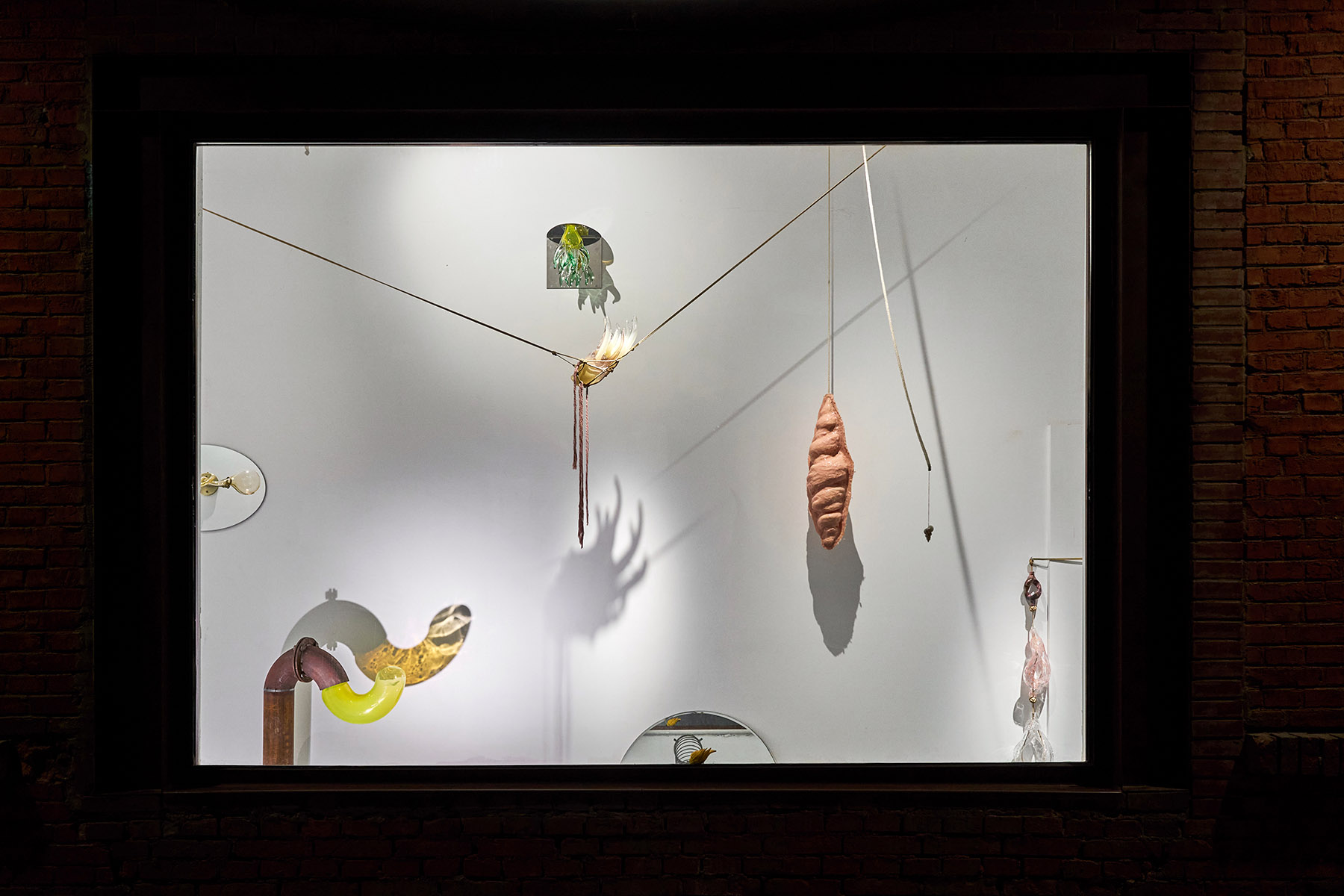
Among the first group of people to work with glass as an artistic medium in China, Xie started studying the material in 2006 at the China Academy of Art in Hangzhou, Zhejiang province, the first year a glass art course was introduced. "I feel it was not me choosing glass, but glass choosing me. What I learned at school was more like traditional sculpture using glass as a medium," she says, adding that at the time, it was a lesser-known major, and due to the lack of facilities, she didn't learn techniques like glassblowing at school.
Xie later studied in Britain, and received a Master of Arts degree from London's Royal College of Art in 2012. "During my time there, I realized for the first time that I didn't want to be a glass artist, but rather an artist who works with glass as a medium," Xie says.
During her second year in London, she began to find her creative footing in the world of art. She started working with two or three materials together, allowing them to influence each other, and used contrasting black and white colors to confuse the perception of weight. Through techniques such as glassblowing, casting, shattered glass, as well as incorporating other materials like black clay and ceramics, she explored the ambiguity arising from the technical versatility of glass as an artistic medium.
One of her graduation pieces, Journey, was nominated for the 2012 Stanislav Libensky Award, an international competition that recognizes outstanding glassworks by art college graduates. The piece was inspired by the sight of a lone plastic bag swirling in the air during a train ride to Edinburgh, which resonated with her as a student studying alone overseas.
"Memory is always changing and intangible, and reflects the past, but not the actual past. I try to capture this through my art," Xie says.
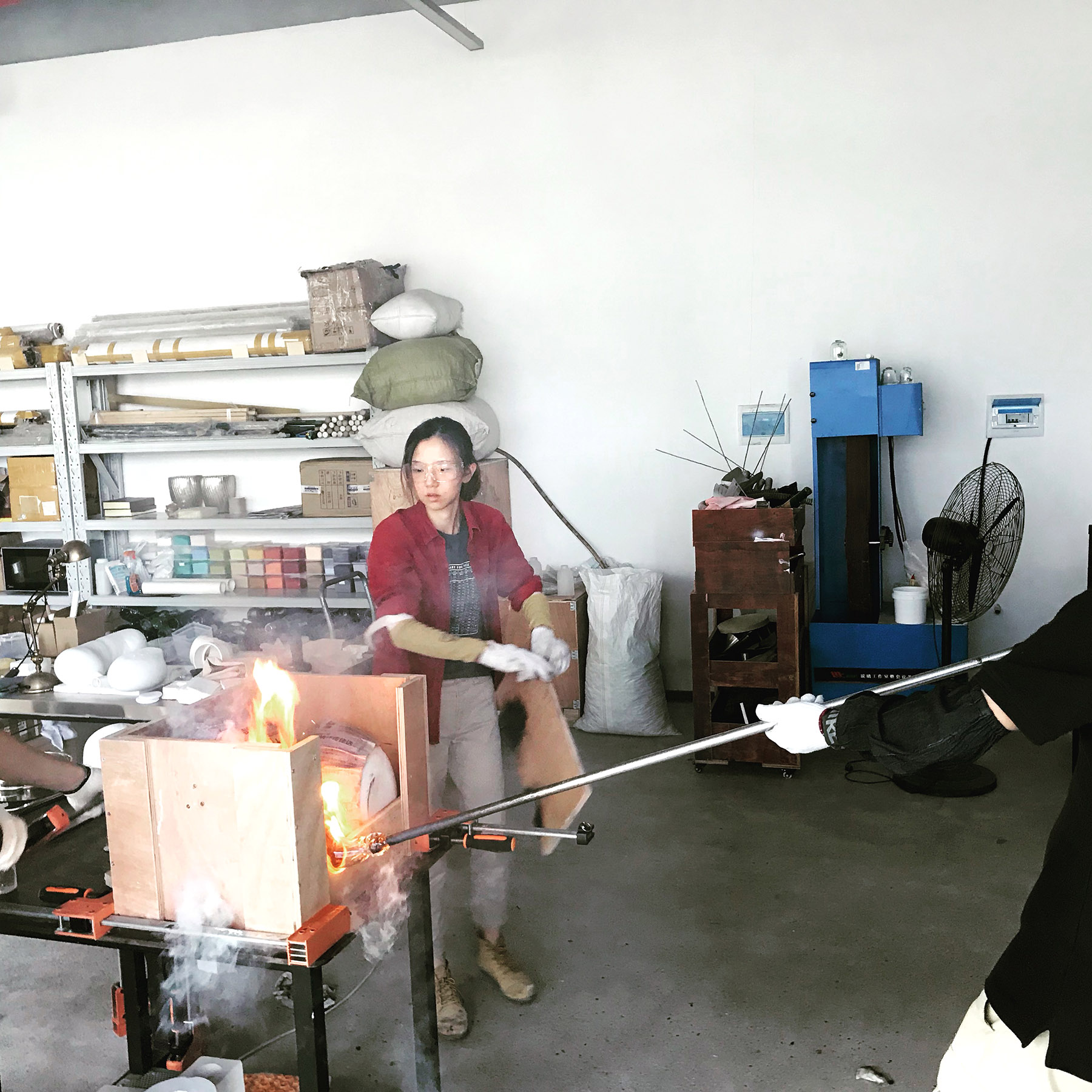
After graduating in 2012, she got a job at the Shenzhen Art Museum in Guangdong province, because she didn't know how to "become "an artist, and glass art was a comparatively new concept in China. During her six years at the museum, Xie spent most of her holidays taking part in glass workshops in the United States. In 2016, a public art work of hers, a large piece of stained glass titled Bridge the World, was displayed at the Shenzhen airport metro station.
In 2017, she was invited for an artist-in-residence program in Shenzhen. For its three-month duration, Xie worked at the museum during the day, and made art at the craft factory at night. Her subsequent solo exhibition Form Form Form explored form in daily life. In another piece called Breathing, several transparent glass balls were squeezed into a glass tank, creating subtle tension, a reflection of her state of mind at the time, a mix of repression, self-denial and a yearning for life.
Xie quit her job in 2018 to become an independent artist. For the first few years, she had to make her art in factories that produced everyday objects or industrial goods, as she didn't have her own studio. This was also partially why she participated in artist-in-residence programs.
Her experiences resulted in the exhibition Strength Factory in 2023. "Strength" is a common topic that Xie has explored in her art, and "factory" referred not only to a workspace, but also to a place for her to observe life and interact with people.
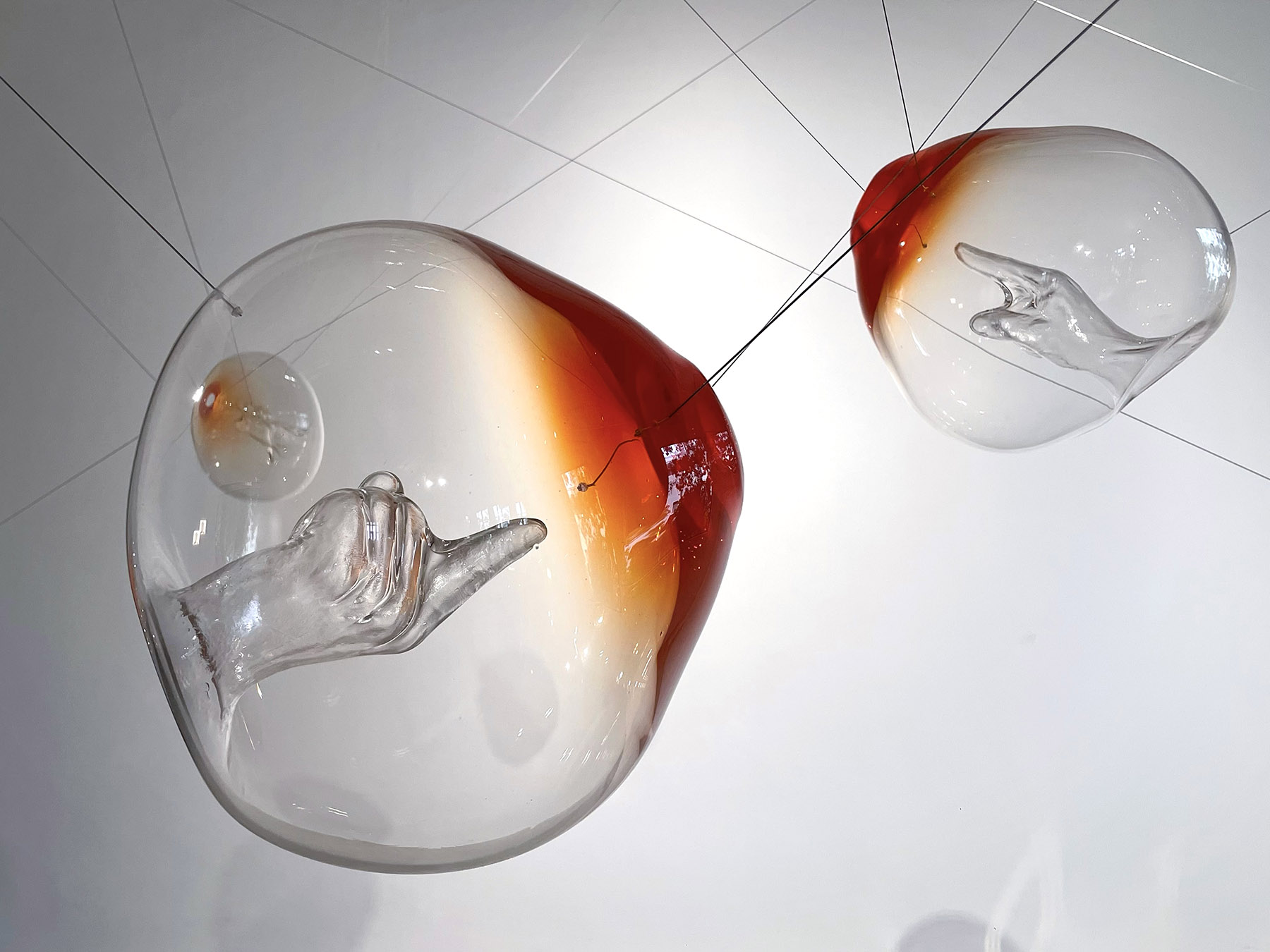
Her relationship with factory workers influenced her art to varying degrees. One of the best examples is Floating Thread, which Xie created during her stay at the Nanhai Silk Factory in Foshan, Guangdong province, in 2022, where she saw female workers standing in front of large machines, their fingers rapidly moving over silk fibers thinner than a human hair.
These movements intrigued her, and she wanted to express their juxtaposition of lightness and strength; for example, she saw the women as sensitive, fluid, soft and tough. She made plaster casts of dozens of hand movements commonly used at the factory, and then in a glass factory in Zhongshan, Guangdong, she blew glass into the casts. After they cooled, a transparent hand was created.
Yang Xin, curator at Shanghai Museum of Glass, says that Floating Thread opens a window onto rarely seen parts of these workers' lives.
Between last September and November, an improved version of a piece related to the silk workers, In Her Own Body — Mei, was part of a group exhibition in Norway called Still in Love. The exhibition's organizers said that Xie had "turned her serendipitous encounter with these female silk workers into elegant glass bubbles that encapsulate the hand gestures used in reeling silk from cocoons".
Xie explains that the form and color of the glass bubbles represented the shape of the body and the innate strength of women.
She used three steel wire ropes to make it appear to be floating in the air, allowing visitors to feel the tension between the rope and the glass bubbles, each of which weighs about 5 kilograms. The ropes, art and the surrounding space became intertwined as a whole, Xie adds.
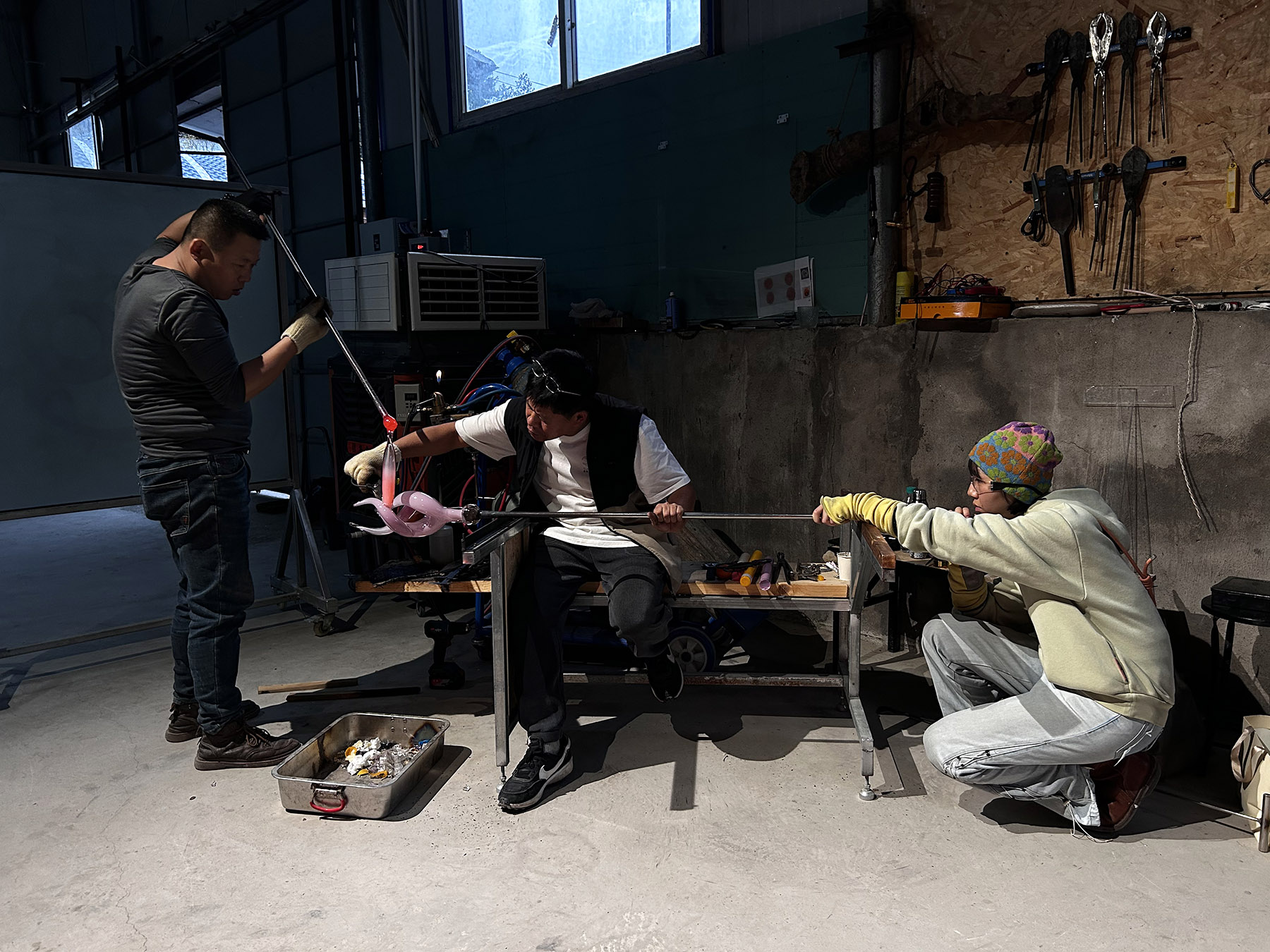
Working in factories has gradually become a way of creation, and her pieces are often about connections built between people.
She has explored other materials besides glass. One piece that resulted, Spring, is being displayed at an exhibition of the luxury brand Bvlgari between Thursday and Feb 16 in Shanghai. The piece — two intertwined ring structures which form an infinity symbol from certain angles — was inspired by the appearance of a flexible gas pipe. At each end, there is a piece of blown glass that hangs down or curves slightly upward, which resembles a flower.
ALSO READ: Qixian's glassware heralds global presence
"This latest piece is important to me, as it takes what I want to express a step further: the concept of force and the interaction of forces," Xie says.
She does not view her career as an artist as a job, but as a way of life. She enjoys residency programs — every year she participates in at least one or two — that take her to new places and keep her inspired. She also enjoys the nomadic lifestyle, and is always ready to go, with her daily necessities packed in her car. Her next artist-in-residence program is in May in Longquan, Zhejiang province, where she will try her hand at ceramics.
"Just like my art, I want to go with the flow of life and see what it brings," Xie says.
Contact the writer at wangqian@chinadaily.com.cn


